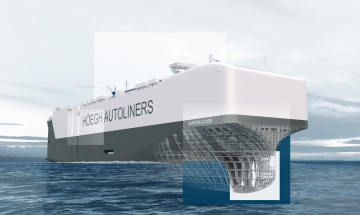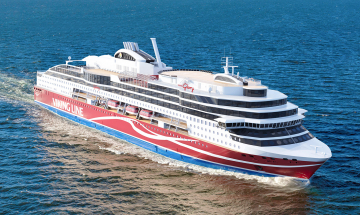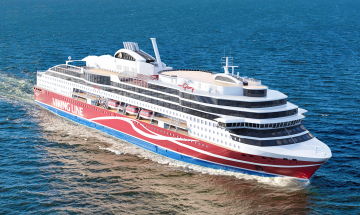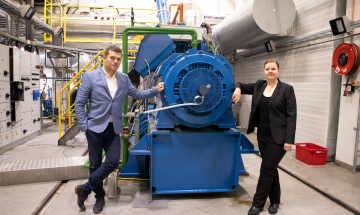
National and international efforts to promote the automation of water transport
The Ministry of Transport and Communications is currently preparing a legislative and action plan for transport automation that will cover all modes of transport. It is intended to be completed during 2020.
This article provides an overview of the regulation, definitions and measures needed in maritime transport.
Finnish legislation in itself takes a welcoming approach to various automation trials in water transport. Some challenging experiments have already been carried out in national waters, while the International Maritime Organization’s (IMO) interim guidelines for trials provide support to different countries for agreeing on joint experiments.
However, many issues still need to be resolved at international level, starting with definitions. For this reason, Finland plays an active role in the IMO and the EU in building the future legislation and ethical framework for artificial intelligence required by the gradual introduction of automation.
Autonomous and remote-controlled vessels must comply with the same traffic rules laid down in law as conventional vessels, but the effects of automation on navigation, situational picture, safe manning and the necessary expertise are lacking in legislation.
The issues to be resolved include interface, data and data transfer requirements, standardisation and uniform performance standards that automation solutions must meet in order to be accepted for use.
In order to verify performance and ethical standards, the design methods must be transparent and information on the results of trials and simulations must be available. We also need to know in what kind of operating environment the solution works and what the operating limitations are. In addition, we must develop ways to reliably adopt new solutions, for example through certification.
At the moment, the legislation is based on vessels having a responsible master and crew on deck. The owner and ship manager, on the other hand, bear the responsibility for any damage. However, transferring decision-making to an autonomous system limits the opportunities for human influence.
We must therefore solve the issue of human responsibility in relation to the decision-making of artificial intelligence systems. Human competence will continue to be needed, but could the responsibilities and obligations be more limited and could they be shared in a new way? The responsibilities of the owner, ship manager and technology suppliers should also be examined when the autonomous system causes damage or is defective.
Smart routes for automated vessels
Transport automation requires both physical and digital infrastructure. In maritime transport, so-called smart routes include physical structures that are fixed or floating safety devices along the route. It is important that digital information about their location is available. Safety devices are considered smart when they can be controlled remotely and they are able to collect and transmit condition and situational data.
Digital infrastructure enables more efficient communications connections, such as 5G. It is essential to take into account the needs of digital infrastructure in large construction projects for fixed safety devices on sea routes.
It is necessary to examine the state of digital infrastructure of waterways and ports, the data management model and their development needs and opportunities. We need to increase the use of smart safety devices on key routes, while taking into account the needs of piloting, and build digital infrastructure in areas where business needs have been identified.
We also need to determine how essential information on situation, location and route data could be made available to vessels, authorities, vessel services and ports operating in the same area. For example, ship technologies, sensor fusion and edge computing support the processing of the information needed for automation.
A common situational picture requires sufficiently efficient connections and up-to-date sharing of necessary information through interfaces. It may therefore be necessary that legislation defines responsibilities for the quality and timeliness of the data and requires the sharing of information and the opening of interfaces.
Impacts on emissions
Maritime automation aims at safer, more efficient but also more sustainable mobility. For example, just optimising the route increases environmental efficiency and thus reduces emissions.
Emissions reductions can also be influenced by intelligent traffic control: automation in the exchange of route data, utilisation of sensor data and optimisation of the use of the route. The greatest potential for reducing emissions is at ports and the greatest safety challenges are also related to port navigation.
The progress of automation and the development of digital exchange of information required by it is also important when we prepare for pandemics. If it were possible to safely reduce the number of crew members on board and to carry out some of the tasks requiring critical expertise from the shore, the ship’s operational capacity could be better maintained in the event of a pandemic.
Cooperation is the way forward
Primarily, cooperation is needed if we want to advance high-level automation and autonomous shipping.
Finland, together with some other leading countries in the automation of shipping, is a member of a recently established Singapore-led MASSPorts network, which focuses on automated shipping and port cooperation. The network aims to launch concrete trials between ships and ports and to promote guidelines, standardised exchange of information and common terminology.
The EU Commission is currently preparing operational trial guidelines for trials, which will supplement t.he IMO’s guidelines. In the preparation, Finland emphasises a high-quality operating environment for trials, clear responsibilities, avoidance of unnecessary administrative burdens and the protection of business secrets.
The cooperation to enable the automation of shipping will continue in the Ministry of Transport and Communications’ automation network.
Anne Miettinen
The author works as Senior Ministerial Adviser in the Data Business Unit at the Ministry of Transport and Communications.
Photo: Senior Ministerial Adviser Anne Miettinen, photo by Suvi-Tuuli Kankaanpää Keksi/LVM




